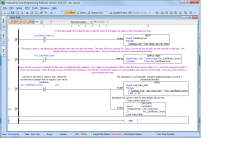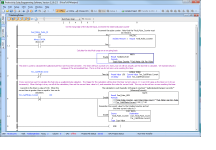Hi folks,
We've just sorted out getting a pulse from some flowmeters that came with our gas generators, I'm just wondering if there are any pitfalls I should avoid when setting up the flow rate. My colleague has created a block to calculate the flow rate but it's not working so I'm tempted to just write my own. Any change I make to the block will need to be done offline and be re-downloaded anyway.
I've read before that it's better to use the wall clock time instead of timers in certain situations and that if using counters past a certain value you may end up losing data. Should I use the wall clock time in this case? The reason I ask is because these rates and totals are pretty important as they will be used to charge a subsidiary for the amount used so I'm trying to avoid as much loss over time as possible. All our other flowmeters are 4-20 so this is new to us. Lesson learned... don't ever let contractors purchase instruments for you.
Thanks,
Darren
We've just sorted out getting a pulse from some flowmeters that came with our gas generators, I'm just wondering if there are any pitfalls I should avoid when setting up the flow rate. My colleague has created a block to calculate the flow rate but it's not working so I'm tempted to just write my own. Any change I make to the block will need to be done offline and be re-downloaded anyway.
I've read before that it's better to use the wall clock time instead of timers in certain situations and that if using counters past a certain value you may end up losing data. Should I use the wall clock time in this case? The reason I ask is because these rates and totals are pretty important as they will be used to charge a subsidiary for the amount used so I'm trying to avoid as much loss over time as possible. All our other flowmeters are 4-20 so this is new to us. Lesson learned... don't ever let contractors purchase instruments for you.
Thanks,
Darren






